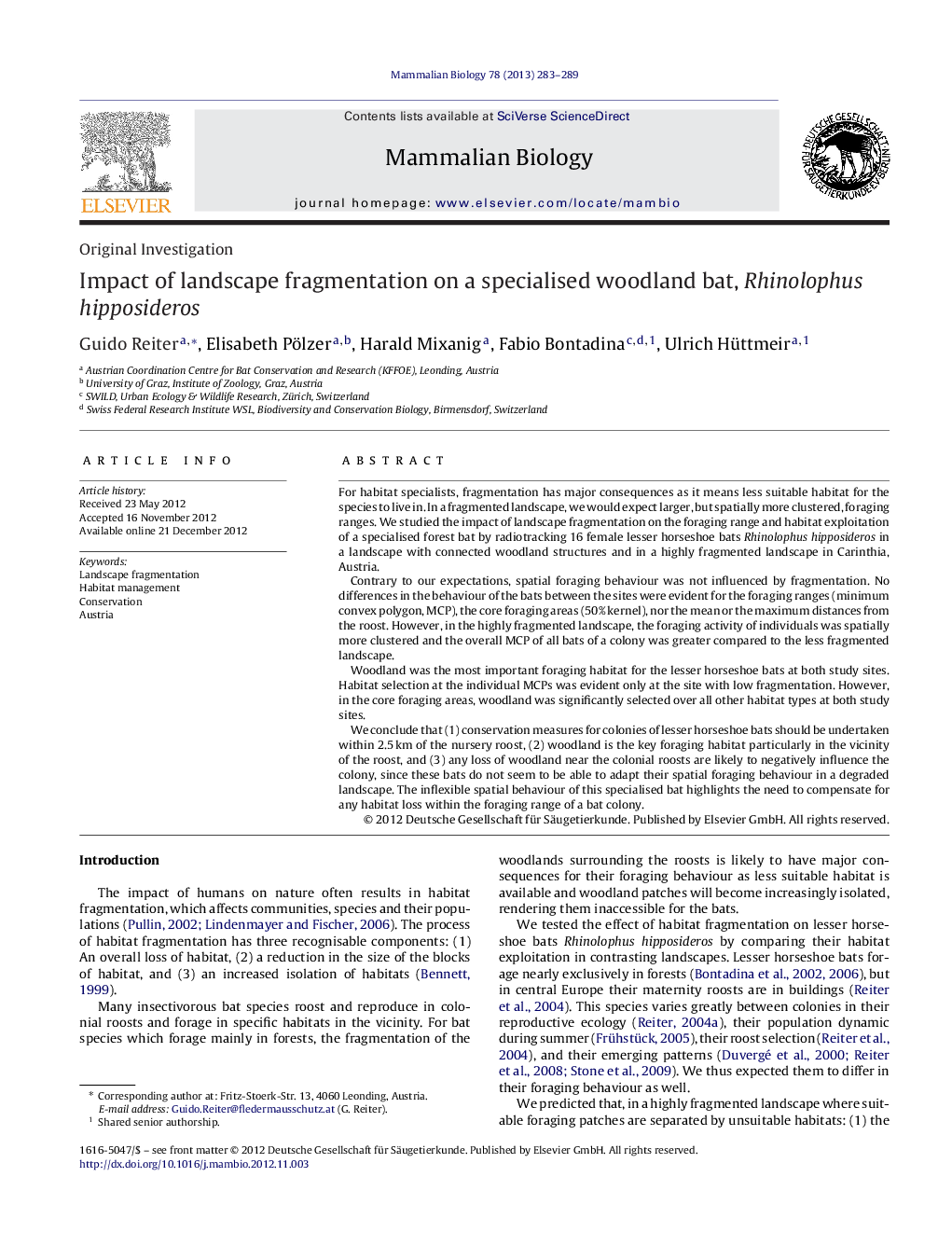| کد مقاله | کد نشریه | سال انتشار | مقاله انگلیسی | نسخه تمام متن |
|---|---|---|---|---|
| 2193812 | 1098400 | 2013 | 7 صفحه PDF | دانلود رایگان |

For habitat specialists, fragmentation has major consequences as it means less suitable habitat for the species to live in. In a fragmented landscape, we would expect larger, but spatially more clustered, foraging ranges. We studied the impact of landscape fragmentation on the foraging range and habitat exploitation of a specialised forest bat by radiotracking 16 female lesser horseshoe bats Rhinolophus hipposideros in a landscape with connected woodland structures and in a highly fragmented landscape in Carinthia, Austria.Contrary to our expectations, spatial foraging behaviour was not influenced by fragmentation. No differences in the behaviour of the bats between the sites were evident for the foraging ranges (minimum convex polygon, MCP), the core foraging areas (50% kernel), nor the mean or the maximum distances from the roost. However, in the highly fragmented landscape, the foraging activity of individuals was spatially more clustered and the overall MCP of all bats of a colony was greater compared to the less fragmented landscape.Woodland was the most important foraging habitat for the lesser horseshoe bats at both study sites. Habitat selection at the individual MCPs was evident only at the site with low fragmentation. However, in the core foraging areas, woodland was significantly selected over all other habitat types at both study sites.We conclude that (1) conservation measures for colonies of lesser horseshoe bats should be undertaken within 2.5 km of the nursery roost, (2) woodland is the key foraging habitat particularly in the vicinity of the roost, and (3) any loss of woodland near the colonial roosts are likely to negatively influence the colony, since these bats do not seem to be able to adapt their spatial foraging behaviour in a degraded landscape. The inflexible spatial behaviour of this specialised bat highlights the need to compensate for any habitat loss within the foraging range of a bat colony.
Journal: Mammalian Biology - Zeitschrift für Säugetierkunde - Volume 78, Issue 4, June 2013, Pages 283–289